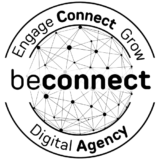
Picture this: you’re browsing the internet, and you stumble upon a website that catches your eye. It’s visually appealing, easy to navigate, and provides a seamless user experience. The chances are that a skilled web designer created it. But what is a web design, and how do you become a web designer? In this comprehensive guide, we’ll explore the fascinating world of web design, answer all your burning questions, and provide you with actionable tips to get started in this creative field.
What is Web Design?
Web design encompasses the process of creating, planning, and maintaining websites. It involves various elements, such as layout, colour scheme, graphics, and content. Web designers pay attention to both form and function, working to make sites that are appealing visually and simple to use.
Let’s have a look at the tasks that are performed by web designers now that we understand what web design is.
A Day in the Life of a Web Designer
Web designers work with clients to create visually appealing and functional websites that meet their specific needs. They may be responsible for designing a site from scratch or revamping an existing one. Some of the tasks a web designer may perform include:
- Meeting with clients to discuss their website goals and requirements
- Creating wireframes and mock-up’s to visualize the website layout
- Designing visual elements, such as logos and graphics
- Choosing colour schemes and typography
- Implementing responsive design to ensure the website works well on all devices
- Writing HTML, CSS, and JavaScript code to bring the design to life
- Ensuring the website is search engine friendly, incorporating SEO best practices like those provided by beconnect.ie
- Collaborating with other professionals, such as content writers, developers, and marketing specialists
- Testing the website for usability and fixing any bugs or issues
- Providing ongoing support and updates to clients
With a clear understanding of what web designers do, let’s dive into the different types of web design.
The Many Faces of Web Design
There are several types of web design, each with its own unique characteristics and approaches. Some of the most common types include:
- Static Web Design: These websites have fixed content that doesn’t change without manual updates. They’re best suited for small businesses or individuals who don’t require frequent updates or user interactivity.
- Dynamic Web Design: Dynamic websites use server-side scripting to generate content on-the-fly. They offer a more interactive experience and are ideal for businesses that need to update content frequently or have personalized content for users.
- Responsive Web Design: This approach ensures that a website’s layout and design adapt to different screen sizes and devices, providing an optimal user experience regardless of the device being used.
- Adaptive Web Design: Similar to responsive design, adaptive design tailors the website to different devices and screen sizes. However, it does so by using predefined layouts for specific devices, rather than fluid grids and flexible images.

E-commerce Web Design: E-commerce websites facilitate online transactions and require specialized design elements, such as product pages, shopping carts, and secure payment systems. Check out beconnect e-commerce design services (https://beconnect.ie/ecommerce-design/) for more information on creating an engaging online shopping experience.
Now that we’ve covered the different types of web design let’s discuss how to start your journey in this creative field.
Taking the First Steps in Web Design
Are you interested in pursuing web design as a career or hobby? Here’s a step-by-step guide to help you get started:
- Learn the basics: Familiarize yourself with fundamental web design concepts and principles, such as colour theory, typography, and layout. You can find numerous online resources, including articles, tutorials, and video courses, to help you learn these basics.
- Master the essential tools: Web designers use various tools, such as Adobe Photoshop, Illustrator, and Sketch, for design purposes. Additionally, you’ll need to learn HTML, CSS, and JavaScript, which are the core languages used in web development.
- Build a portfolio: Showcase your skills and creativity by creating a portfolio of your web design projects. This will serve as a visual resume when applying for jobs or attracting freelance clients.
- Network with professionals: Connect with other web designers and professionals in the industry to learn from their experiences, stay updated on the latest trends, and discover job opportunities.
- Stay curious and keep learning: Web design is an ever-evolving field, and it’s crucial to stay current with new design trends, tools, and technologies.
But you might be wondering, can web designers make a good living?
The Financial
Side of Web Design: Do Web Designers Make Money?
Yes, web designers can make a comfortable living, whether they choose to work as freelancers or full-time employees. According to the U.S. Bureau of Labor Statistics, the median annual wage for web developers and digital designers in 2020 was $77,200. Freelance web designers can also earn a significant income, depending on their experience, skills, and client base.
Essential Skills for Web Designers
To excel in the world of web design, you’ll need a combination of technical and soft skills. Some of the most important skills for web designers include:

- Proficiency in HTML, CSS, and JavaScript
- Knowledge of design software, such as Adobe Creative Suite and Sketch
- Strong visual design skills, including colour theory, typography, and layout
- User experience (UX) and user interface (UI) design principles
- Problem-solving and critical-thinking abilities
- Time management and organizational skills
- Effective communication and teamwork
The Building Blocks of Web Design
To create an effective website, you’ll need to consider some basic web design principles. These foundational elements include:
- Hierarchy: Organize your content in a clear and logical manner, with headings and subheadings to guide users through the information.
- Consistency: Ensure that your design elements, such as fonts, colours, and buttons, are consistent throughout the website, creating a cohesive look and feel.
- Navigation: Provide easy-to-use navigation menus and links, allowing users to quickly find what they’re looking for.
Readability: Choose fonts and colours that are easy to read and ensure that there is adequate contrast between text and background.
- Whitespace: Incorporate whitespace (empty space) into your design to prevent visual clutter and improve readability.
- Mobile-friendliness: Ensure that your website works well on all devices, particularly smartphones and tablets, as more and more users access the web from these devices.
- Accessibility: Design your website to be accessible for all users, including those with disabilities, by following Web Content Accessibility Guidelines (WCAG).
Phases and Stages of Web Design
The web design process typically involves several phases and stages, which may vary depending on the specific project and client requirements. Here’s a general overview of the web design process:
- Discovery and planning: Gather information about the client’s goals, target audience, and competitors. Create a project plan, including a timeline and budget.
- Design: Develop wireframes and mock-up’s to visualize the website’s layout and design. Create visual elements, such as logos, graphics, and images.
- Development: Write HTML, CSS, and JavaScript code to transform the design into a functioning website. Implement responsive design and ensure the site is compatible with various browsers and devices.
- Testing and quality assurance: Test the website for usability, performance, and accessibility. Fix any bugs or issues that arise during testing.
- Launch and maintenance: Deploy the website to a live server and monitor its performance. Provide ongoing support and updates as needed.
The Self-Learning Journey in Web Design
Yes, you can definitely teach yourself web design. Thanks to the wealth of online resources available, learning web design independently has never been easier. Some of the ways you can self-learn web design include:
- Reading web design blogs and articles
- Watching online video tutorials and courses
- Participating in web design forums and online communities
- Experimenting with different web design tools and software
- Creating personal projects and building a portfolio
As with any learning journey, the key to success in web design is persistence, curiosity, and a willingness to learn from your mistakes.
Is Web Design Hard to Learn?
While web design may seem daunting at first, with dedication and practice, it becomes more manageable. Learning web design can be challenging, especially when it comes to mastering technical skills like coding. However, if you have a passion for design and are willing to invest time and effort into learning, you can become a proficient web designer.
Breaking into Web Design with No Experience
Even if you don’t have any formal experience or education in web design, you can still break into the industry by following these steps:
- Learn the fundamentals of web design and acquire the necessary skills, as discussed earlier in this article.
- Create a strong portfolio showcasing your web design projects. If you don’t have any client work, design websites for fictional companies or redesign existing websites to demonstrate your skills.
- Network with professionals in the industry, both online and in person. Attend web design meetups, conferences, and workshops to expand your network and learn from experienced designers.
- Apply for internships, freelance gigs, or entry-level web design positions. Even if the pay is low initially, these opportunities will provide valuable experience and help you build a solid reputation in the industry.
Golden Rules and Principles of Web Design
To create engaging and effective websites, keep these golden rules and principles in mind:
- Prioritize usability and functionality: A visually stunning website is useless if users can’t find what they need or interact with it easily. Focus on creating a user-friendly experience.
- Keep it simple: Avoid clutter and complexity in your design. A clean and straightforward design will make it easier for users to navigate and find the information they seek.
- Design for mobile first: With an increasing number of users accessing websites from mobile devices, it’s crucial to design with mobile users in mind from the outset.
- Optimize for SEO: Ensure that your website is search engine friendly by incorporating SEO best practices, like those offered by beconnect. This will increase your site’s visibility and drive more traffic.
- Be consistent: Maintain a consistent look and feel across all pages of your website to create a cohesive user experience.
- Test and iterate: Continuously test your website for usability, performance, and accessibility, and make improvements based on user feedback and analytics.
What Makes a Good Web Design?
A good web design is one that effectively communicates the intended message, engages users, and encourages them to take action (e.g., make a purchase, sign up for a newsletter, etc.). Key characteristics of a good web design include:
- Visually appealing and professional-looking design
- Clear and concise content that is easy to understand
- Intuitive navigation and user-friendly layout
- Fast loading times and optimized performance
- Mobile-friendly and responsive design
- Accessibility for all users, including those with disabilities
- Consistent branding and design elements
- Effective use of whitespace to avoid clutter
- Attention to SEO best practices to improve visibility and organic traffic
The Three Pillars of Web Design
To create an outstanding web design, you need to consider these three essential principles:
- Usability: Ensure that your website is user-friendly, easy to navigate, and provides a positive user experience. This includes optimizing the site for different devices and browsers, as well as accommodating users with disabilities.
- Aesthetics: A visually appealing website will engage users and leave a lasting impression. Focus on creating a professional and visually cohesive design, using consistent colours, fonts, and imagery.
- Content: High-quality, relevant, and informative content is the backbone of any successful website. Make sure your content is well-organized, easy to read, and effectively communicates your message.
In conclusion, web design is a fascinating and ever-evolving field that combines creativity, technical skills, and an understanding of user behaviour. By following the guidelines and principles outlined in this comprehensive guide, you’ll be well on your way to creating engaging and effective websites that leave a lasting impression. Whether you’re a seasoned professional or just starting, remember to stay curious, keep learning, and not be afraid to experiment. Happy designing!





